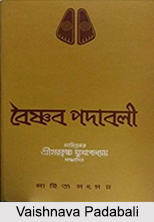 The doctrines and belief of Vaishnavism are based on the philosophical theories that have been enunciated in the Upanishads and the Vedanta Sutra which provide the rational basis for the Vaishnava theology. The major part of the philosophical roots of Vaishnavism is found in the Vedanta theories. Lord Vishnu is the ultimate Reality in Vaishnava belief. It believes that the exclusive and devoted worship of Vishnu leads to the realization of the highest spiritual goal and for this purpose, it has laid down an ethical and religious discipline.
The doctrines and belief of Vaishnavism are based on the philosophical theories that have been enunciated in the Upanishads and the Vedanta Sutra which provide the rational basis for the Vaishnava theology. The major part of the philosophical roots of Vaishnavism is found in the Vedanta theories. Lord Vishnu is the ultimate Reality in Vaishnava belief. It believes that the exclusive and devoted worship of Vishnu leads to the realization of the highest spiritual goal and for this purpose, it has laid down an ethical and religious discipline.
Monotheism in Vaishnavism
The philosophy of Vaishnavism is strongly centred on the concept of monotheism. It holds that Narayana is the highest personal God, the Supreme Being. All the deities are said to have been created by Him and all other deities are, therefore, parts of that one great Being. He pervades all the three worlds and controls them.
Concept of Ultimate Reality in Vaishnavism
The central theme of Vaishnavism is that Vishnu is the Supreme Deity and the entire universe consisting of sentient, souls and non-sentient matter is pervaded by Him. This theory is the direct outcome of the philosophy of the Ultimate Reality as enunciated in the Vedanta.
Concept of Individual Self - Jiva in Vaishnavism
Another major concept adopted by Vaishnavism from the Upanishads is that of "Jiva". The Upanishads speak of the existence of jiva as a real spiritual entity and also as distinct from Ishwar. The Visistadvaita Vedanta has admitted jiva as a separate reality (tattva). The word jiva means lives. It is also known as atman, a term which is more often used in the Upanishads. The word "atman" means, which pervades the body. The Jiva is essentially an eternal entity who is self-luminous, the Subject of Knowledge and an integral part of Brahman.
 Bhakti Yoga in Vaishnavism
Bhakti Yoga in Vaishnavism
According to the Upanishads, philosophic knowledge should culminate in the attainment of the highest spiritual goal. According to the "Visistadvaita Vedanta", it is either Bhakti Yoga or Prapatti Yoga that serves as the direct means to achieve the supreme human goal. Both are important means for Moksha and have been advocated as alternative methods intended for two different categories of individuals having different capacities and conditions of eligibility. The Upanishads and the Vedanta Sutra have given greater emphasis to Bhakti Yoga, also known as Upasana, whereas the Vaishnava treatises have accorded prominence to Prapatti.
Karma Yoga in Vaishnavism
The main goal of Bhakti Yoga is the realisation of God. This needs to be preceded by the self-realization or the vision of one`s own self. For this purpose, both the Karma Yoga and Jnana Yoga have been laid down as direct means (upaya). According to the Bhagavad Gita, Karma Yoga can serve as an aid to Jnana Yoga which secures the realization of the self. It can also serve as a direct means to self-realization since the practice of Karma Yoga in the prescribed manner includes in it the Jnana Yoga. Jnana yoga, by itself, without the aid of Karma Yoga is a difficult path for self-realization and the Gita, therefore, recommends the observance of Karma Yoga as an aid to Jnana Yoga. Karma Yoga is the first step in the spiritual discipline (Sadhana) to be adopted for Moksha.
Jnana Yoga in Vaishnavism
Jnana Yoga is the next important stage of the Sadhana for Moksha. Its goal is the direct vision of the true nature of jivatman. It serves as an important means to Bhakti Yoga. After an aspirant, for Moksha, has successfully completed the practice of Karma Yoga, he can undertake Jnana Yoga. The practice of Jnana Yoga for the purpose of atmavalokana requires the strict observance of the yoga practice as described in the Bhagavad Gita.
 Moksha in Vaishnavism
Moksha in Vaishnavism
Based on the Upanishad teachings, the Visistadvaita Vedanta maintains the view that Moksha is not merely the negative concept of freedom of the individual soul from bondage but a positive state of existence of jiva in a supra-mundane realm (Brahma Loka) where it regains its true form and enjoys the full glory of Brahman. In the words of Vedanta Desika, it is a complete and comprehensive experience of Brahman. The soul in the state of Moksha manifests itself in its true form. The soul does not become merged with Brahman but on the contrary, retains its individuality even in the state of Moksha. Thus, it is believed that the true nature of the soul which is omniscient in character becomes fully revealed only after reaching the state of Moksha.
Theme of Vaishnava Padabali
In each poem of Vaishnava Padabali, the love between Radha and Krishna is manifested with different places such as on the banks of Yamuna River, their secret trysts in the forests. The poems also describe Lord Krishna"s charm with his magical flute, the love of gopis for Krishna, Radha"s state of mind on being separated from Krishna and her anguish on seeing him playing with the other gopis. Most of the poems in Vaishnavism concentrate on the feelings of women.









